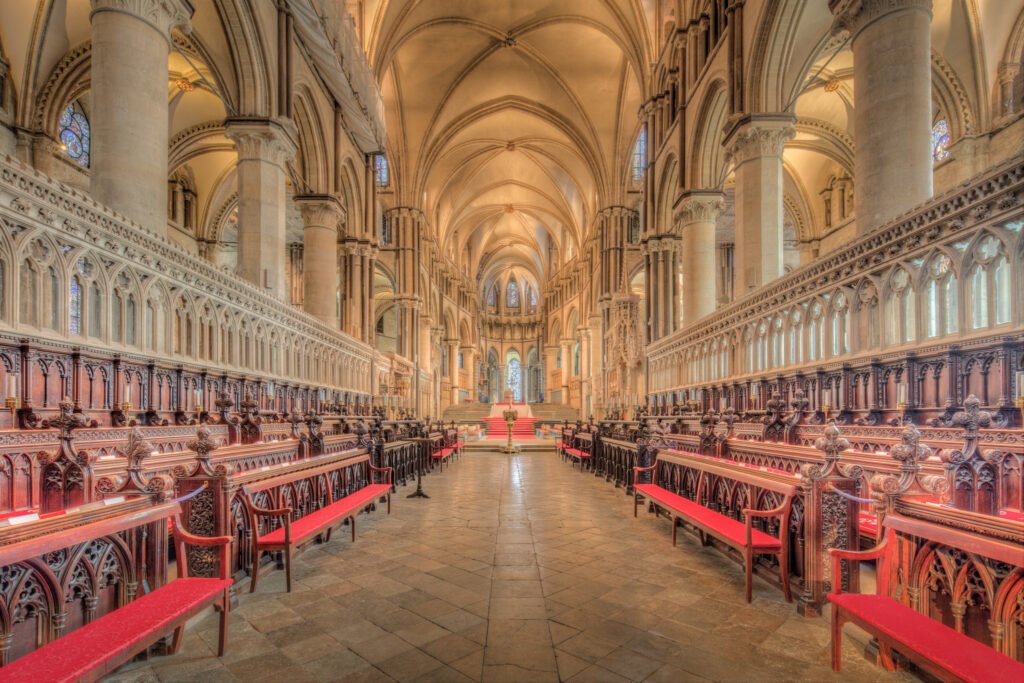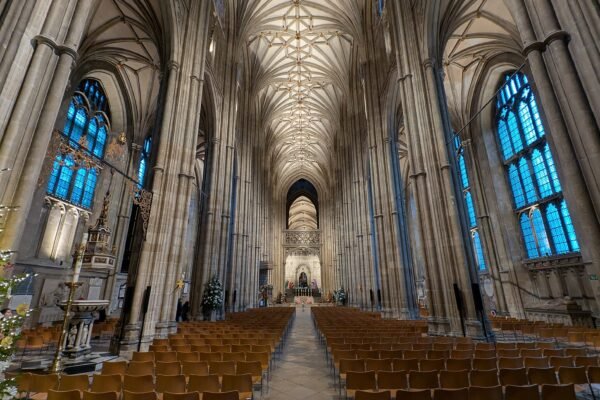Canterbury, England: Exploring Its History and Contemporary Appeal

For centuries, travellers have been drawn to Canterbury as a key center of faith and storytelling in England. Located in Kent, this historic city has been a pivotal site since prehistoric times, growing through Roman occupation to medieval prominence.
This article explores the multifaceted significance of Canterbury. We will uncover its deep religious heritage, its lasting literary legacy, and its vibrant present-day appeal.
Canterbury’s Religious Significance and Role
Canterbury is often called the center of English Christianity. Its role evolved over centuries from a missionary outpost to a global pilgrimage site, shaping the Anglican faith and broader Christian traditions.
Historical Religious Foundations
The city’s religious importance began in 597 CE. Pope Gregory the Great sent the missionary St. Augustine to convert King Æthelberht of Kent. Augustine was successful, establishing his episcopal see in Canterbury and founding the original cathedral, Christ Church. An episcopal see is the principal seat of a bishop’s authority, making Canterbury the headquarters of the new church in England. Later, the Synod of Hertford in 672 CE granted the Archbishop of Canterbury authority over the entire English Church.
Canterbury’s status was cemented by a dramatic event in 1170 CE: the murder of Archbishop Thomas Becket inside the cathedral. Becket was involved in a severe conflict with King Henry II over the rights of the Church versus the crown. His martyrdom transformed Canterbury into one of Europe’s most important pilgrimage destinations. Devotees flocked to his shrine, boosting the local economy through a network of inns and the sale of relics. This era of pilgrimage was halted during the Reformation in the 16th century, when Becket’s cult was suppressed, yet the site’s historical reverence endured.
Iconic Religious Sites and Legacy
Today, Canterbury’s religious legacy is embodied by its stunning architecture.
- Canterbury Cathedral: The cathedral remains the Mother Church of the worldwide Anglican Communion and the seat of the Archbishop of Canterbury. Rebuilt in stunning Norman and Gothic styles after fires, its notable features include the ancient Norman crypt, intricate stained-glass windows depicting biblical scenes, and the majestic Bell Harry Tower.
- UNESCO World Heritage Site: In 1988, the cathedral, alongside St. Augustine’s Abbey and St. Martin’s Church, was designated a UNESCO World Heritage Site. This title recognizes a place of outstanding universal value that is protected for all humanity.
- St. Augustine’s Abbey: Now in ruins, this abbey was originally founded by Augustine himself.
- St. Martin’s Church: This church is possibly the oldest parish church in England still in continuous use. It was used by Queen Bertha of Kent for her Christian worship even before St. Augustine arrived.
Some people assume that pilgrimages to Canterbury ended entirely after the Reformation. While the original shrine was destroyed, the site’s spiritual draw persists. The cathedral welcomes hundreds of thousands of visitors and worshippers for services and exploration each year. This deep religious fervor also provided rich inspiration for artistic expressions, most famously in medieval tales of the pilgrims who journeyed there.
Canterbury in Literature and the Arts
Canterbury’s history as a pilgrimage destination immortalized the city in creative works. It provided a powerful setting for exploring human nature, society, and spirituality in English literature, becoming a symbol of journey and revelation.
The Canterbury Tales
The cornerstone of the city’s literary fame is Geoffrey Chaucer’s The Canterbury Tales, written between 1387 and 1400. This collection of stories portrays a diverse group of pilgrims traveling from London to worship at Thomas Becket’s shrine.
To pass the time, they engage in a storytelling contest. The work provides a vivid, and often satirical, snapshot of medieval society. Chaucer’s use of Middle English, the language of the common people rather than Latin or French, made literature more accessible and greatly influenced the development of the English language. Through characters like the outspoken Wife of Bath and the corrupt Pardoner, Chaucer explored themes of social class, morality, and religious hypocrisy. The tales also capture the atmosphere of 14th century England, referencing Canterbury’s bustling inns and the economy built around the pilgrims.
Other Artistic Connections
Canterbury’s influence extends beyond Chaucer:
- Playwright Christopher Marlowe was born in Canterbury in 1564. His famous plays, such as Doctor Faustus, reflect the city’s intellectual environment during the Renaissance.
- The 1944 film A Canterbury Tale uses the city during World War II as a backdrop to explore themes of English heritage and modern renewal.
- Russell Hoban’s 1980 novel Riddley Walker reimagines a post-apocalyptic Kent, where the ruined city is known as “Cambry,” showing its enduring metaphorical power.
Some critics argue that Chaucer’s work exaggerates social realities for dramatic effect. However, historians widely regard The Canterbury Tales as a valuable, if stylized, primary source for understanding medieval life. This powerful literary heritage continues to shape Canterbury’s cultural identity and attract visitors to the city today.

Canterbury Today: A Blend of Heritage and Modernity
Building on its deep historical and artistic foundations, Canterbury thrives in the present. It successfully maintains its ancient charm while serving as a dynamic center for education, tourism, and community life in southeast England.
A Vibrant, Modern Profile
Modern Canterbury is a bustling market town and regional hub. Its population grew from around 43,000 in 2001 to approximately 57,000 as of 2021, driven partly by its educational institutions and tourism.
- Tourism: The economy relies heavily on tourism, which generates over £450 million annually and supports nearly 9,400 jobs. Millions of visitors come to see the historic sites, with the cathedral alone hosting over a million people each year.
- Higher Education: The city is home to two major universities, the University of Kent (founded 1965) and Canterbury Christ Church University (founded 1962). Together, they enroll nearly 40,000 students and contribute an estimated £909 million to the local economy, fostering a youthful and diverse atmosphere.
Attractions and Urban Life
Beyond the major religious sites, visitors can explore:
- The Marlowe Theatre, a modern venue for touring productions and performing arts.
- The Canterbury Heritage Museum, which showcases Roman and Saxon artifacts.
- The preserved city walls and the Westgate Towers, which now house a museum.
The city had also faced modern challenges in its history. Parts of Canterbury were destroyed by Baedeker Blitz bombings during World War II. This led to resilient urban planning, including pedestrianized shopping areas and the Whitefriars Shopping Centre. Situated on the River Stour and enjoying a mild oceanic climate, the city offers many opportunities for outdoor activities. Today, community leaders also focus on sustainable development initiatives to combat issues like rising poverty.
Canterbury’s significance, as you can see, is layered. It began as the foundational site for English Christianity, a role defined by saints and a famous martyr that sparked centuries of pilgrimages. This religious prominence, in turn, inspired one of the most important works in English literature. Today, it remains a lively contemporary center for education and tourism.
Further Readings & Resources
The following sources and links are accurate as of the publication date of this article.
- Encyclopædia Britannica on Canterbury, England: https://www.britannica.com/place/Canterbury-England
- UNESCO World Heritage Site for Canterbury Cathedral, St Augustine’s Abbey, and St Martin’s Church: https://whc.unesco.org/en/list/496
- Official Canterbury Cathedral Website: https://www.canterbury-cathedral.org/



Leave a Reply